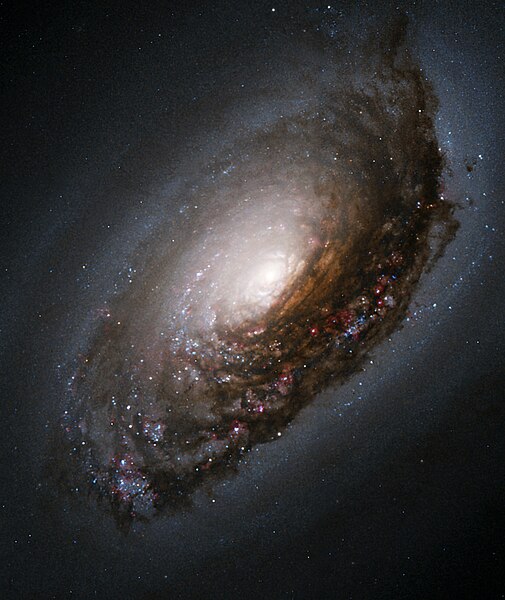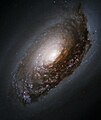Fexeiro:Blackeyegalaxy.jpg

Tamanho desta antebison: 505 × 600 píxeles. Outras resoluçones: 202 × 240 píxeles | 404 × 480 píxeles | 897 × 1 065 píxeles.
Fexeiro oureginal (897 × 1 065 píxeles, tamanho: 774 KB, tipo MIME: image/jpeg)
Stórico de l fexeiro
Clique an ua data/hora para ber l fexeiro tal cumo el staba naquel sfergante.
| Data i hora | Amostra | Tamanho | Outelizador | Comentairo | |
|---|---|---|---|---|---|
| atual | 09h46min de 2 de júnio de 2005 |  | 897 × 1 065 (774 KB) | CWitte | This image of M64 was taken with Hubble's Wide Field Planetary Camera 2 (WFPC2). The color image is a composite prepared by the Hubble Heritage Team from pictures taken through four different color filters. These filters isolate blue and near-infrared lig |
Lhigaçones de l fexeiro
Esta páigina lhiga este fexeiro:
Outelizaçon global dun fexeiro
Las seguintes wikis outelizan este fexeiro:
- Outelizaçon na af.wikipedia.org
- Outelizaçon na ar.wikipedia.org
- Outelizaçon na ast.wikipedia.org
- Outelizaçon na az.wikipedia.org
- Outelizaçon na be.wikipedia.org
- Outelizaçon na bg.wikipedia.org
- Outelizaçon na bn.wikipedia.org
- Outelizaçon na br.wikipedia.org
- Outelizaçon na bs.wikipedia.org
- Outelizaçon na ca.wikipedia.org
- Outelizaçon na ce.wikipedia.org
- Outelizaçon na ckb.wikipedia.org
- Outelizaçon na co.wikipedia.org
- Outelizaçon na cs.wikipedia.org
- Outelizaçon na cy.wikipedia.org
- Outelizaçon na de.wikipedia.org
- Outelizaçon na diq.wikipedia.org
- Outelizaçon na el.wikipedia.org
- Outelizaçon na en.wikipedia.org
- Messier object
- Coma Berenices
- List of galaxies
- Portal:Astronomy/Picture/May 2005
- Portal:Astronomy/Picture/12 May 2005
- Portal:Astronomy/Picture/Week 48 2005
- User:ComaDivine
- User:Superfo
- User:Gilgamesh~enwiki/Favorite images
- List of spiral galaxies
- Portal:Solar System
- Portal:Solar System/WikiProjects
- User:Passargea/Favourite pictures/Space
- User:Logos/Hall of Galaxies
- User talk:Example/Archives/2008/April
- User:Mike YuHong Chen
- User:Stefania.deluca/sandbox
Ber la outelizaçon global deste fexeiro.

